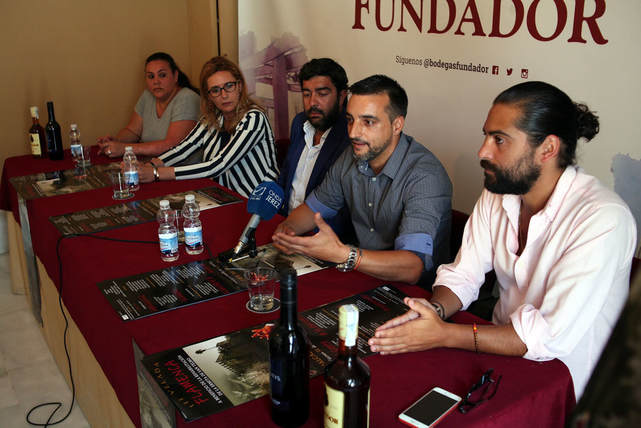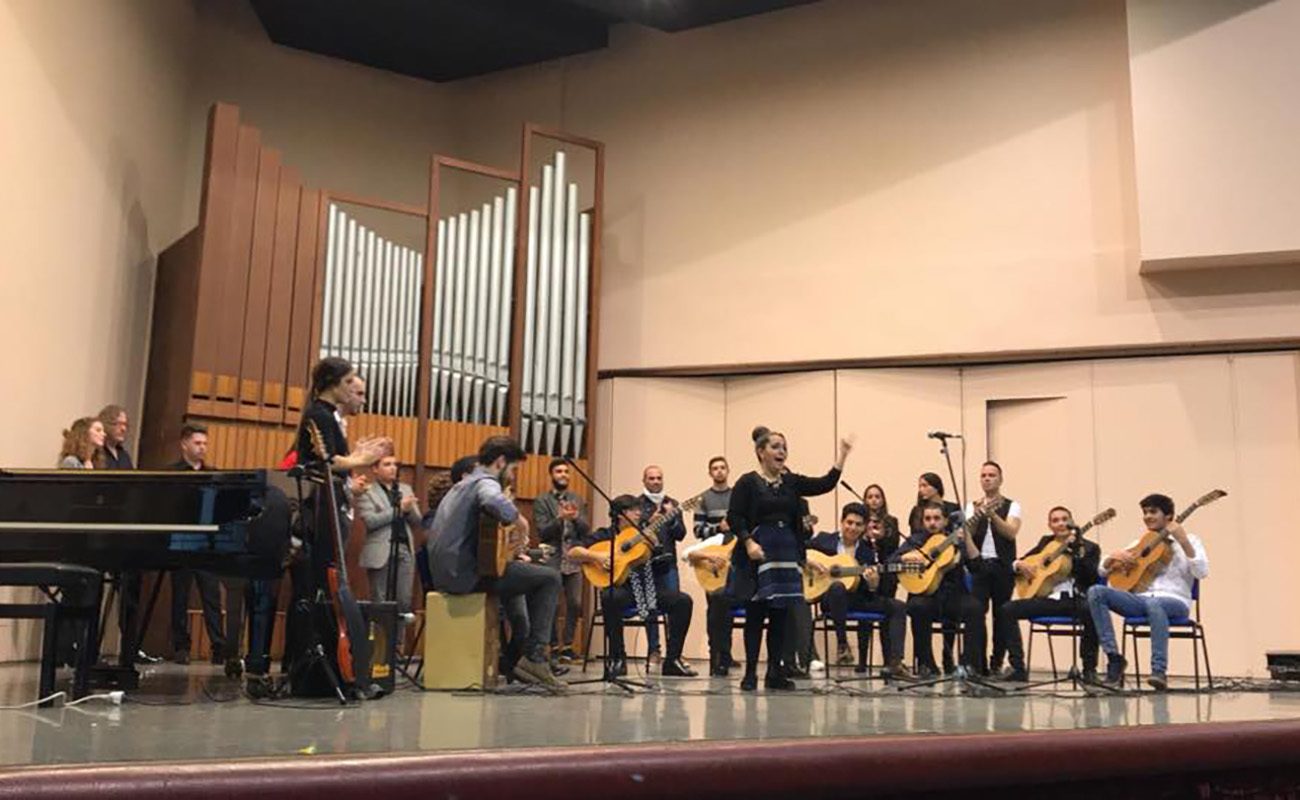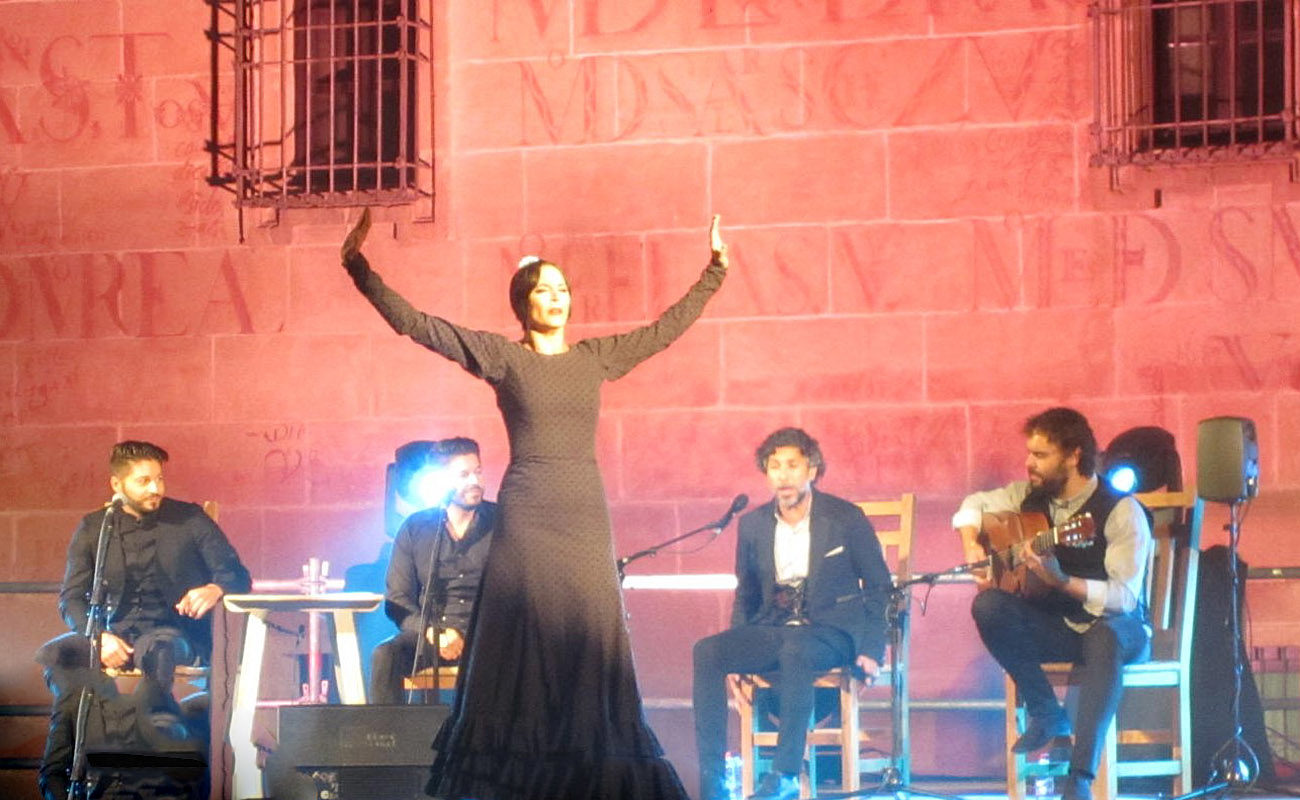Flamenco in Puente Genil (II)
…Continued from Flamenco in Puente Genil (I) When it comes to peñas, we dwell into the delicate topic of flamenco associations, which is rather peculiar in Puente Genil. People in towns and cities have a natural need to socialize in associations to share similar interests and tastes, and that’s the main goal of peñas and similar organizations. In Puente Genil, due to its very strong

…Continued from Flamenco in Puente Genil (I)
When it comes to peñas, we dwell into the delicate topic of flamenco associations, which is rather peculiar in Puente Genil. People in towns and cities have a natural need to socialize in associations to share similar interests and tastes, and that’s the main goal of peñas and similar organizations. In Puente Genil, due to its very strong Holy Week traditions, such need is satisfied with its unique cuarteles or biblical corporations. These cuarteles(literaly “headquarters” or “barracks”) are houses used as meeting venues for each of the biblical corporations, which are small brotherhoods that perform in the Holy Week processions of Puente Genil. There are more than seventy cuarteles, with an average of thirty-five members each, which are the main axis of social life (parties, experiences, hobbies, traditions, etc.), so that all flamenco activity is completely affected by them. For this reason, it’s very difficult for any peña flamenca to become solidly established. There isn’t any peña honoring the master Fosforito, for example, and currently there are two peñas which have Town Council’s commendable and essential financial collaboration, honoring two local cantaores: Peña Frasquito and Peña Vicente Cáceres, the latter located in Sotogordo, one of our hamlets. I belong to the board of directors of the former (which has great merit, as it recently celebrated its 30th anniversary) and I can assure you that we are barely able to survive. Regarding the nearby hamlets, we shall note that historically they nurtured Puente Genil with aficionados and artists, besides organizing each year a good festival with various flamenco events. Concerning taverns, the few left are no longer places where the arte jondo is performed, very much unlike in the old days. Taverns such as those belonging to La Rana, El Tiri or Perico Lavado, among others, will be forever in the collective memory of good aficionados as illustrious centers which promoted this wonderful art.
We now conclude with the political class, the sector within the whole flamenco tangle with the bigger play, as a consequence of what this musical genre has become in Andalusia: a subsidized art, whether we like it or not. There is nothing inherently wrong with this, as long it’s all based on an equitable and responsible system of allocation, based on knowledge and common sense, not on backscratching, politics, ignorance and incompetence. The different Town Councils of Puente Genil have always backed flamenco, assigning a fair share of financial resources to it, firmly believing (I think so) that flamenco is a cultural manifestation which defines us as a community. The current Town Council is no exception, something praiseworthy which we all are thankful for. However, one thing is the attitude and another, quite different, is the aptitude, that is, intention has nothing to do with capability. Since the last few years, there has been a Council for the Promotion and Development of Flamenco in Puente Genil, entrusted with managing institutional flamenco, focused specifically on organizing the Festival de Cante Grande Fosforito, the Membrillo de Oro contest of cante and, this year, a contest of saetas. Previously, this role was undertaken by the Council of Festivities. The least important thing is the name of the municipal delegation in charge of managing flamenco, of course, since what matters is its content, and Puente Genil’s Town Council, at least at this moment, doesn’t have a consistent, serious, well-thought and well-structured annual flamenco programming, a palpable reality discussed among many aficionados in this town. There is a lot of short-term improvisation just to get by. Not to mention the minimal publicity that Town Council gives to the events it organizes. Regarding the Membrillo de Oro contest, which in its current edition wisely increased the monetary value of its prizes, I’ve been told by several contestants that in the last few years its organization has left a lot to be desired, and the number of contestants has dropped by more than fifty percent. Besides, the first prize has continuously been changed (giving the opportunity of either recording an album or performing in the Festival) showing a surprising lack of ideas regarding the purpose of this contest. Regarding the Festival de Cante, the jewel in the crown of flamenco in Puente Genil, while it’s true that the artistic quality has been maintained, no one seems to know what’s the criteria used to define its lineup, and in the last few years peñas haven’t been allowed to take part. This festival, by the way, uses the traditional format, that is, one single evening for as long as the spectators can endure, and it uses a substantial share of the annual municipal budget allocated to flamenco. Last year, according to information advertised by the Town Council itself, the significant amount of 76,000 euros was spent on a lineup which in my opinion was bloated (six cantaores plus baile) and repetitive. Wouldn’t it be more convenient to lower the budget assigned to this festival and allocate the difference to the design of more flamenco content (educational concerts, seminars, lectures, etc.) during the rest of the year? Regarding the contest of saetas, in my opinion Puente Genil doesn’t need such event, because saetas here are already quite healthy in quantity and quality and require no further promoting. The resources available for this contest should be allocated to existing events which haven’t quite matured yet, that is, consolidating the Membrillo de Oro contest, to strengthen and turn it, little by little, in the contest that Puente Genil deserves. By the way, as the years pass by, this town still lacks (despite the stale and continuous electoral promises) a place or venue where, with the proper resources, flamenco can be promoted and nurtured from an intellectual perspective, besides showcasing Puente Genil’s rich flamenco tradition. A few years ago, Sala Fosforito was opened with grand pomp and ceremony by the Town Council, which promised to equip it for such purposes. Up to this day, however, it remains just a lifeless music hall with no use other than touristic.
Definitely, my dear friends, as the biblical proverb goes, I supposed that what I state here is nothing new under the sun, as all of this roughly reflects similar situations in most other flamenco municipalities. It’s what it is.
Flamenco Greetings.

Álvaro de la Fuente Espejo




